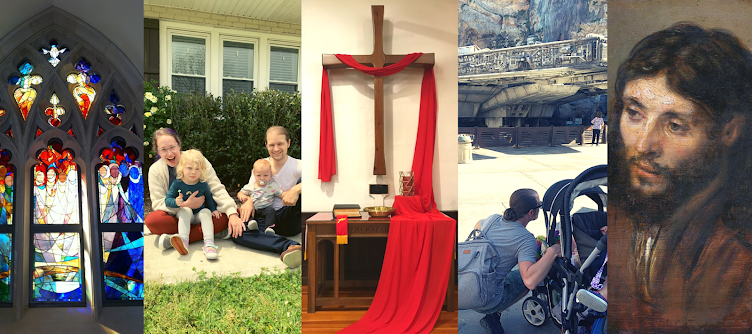“And while they were there, the time came for her baby to be born. She gave birth to her firstborn son. She wrapped him snugly in strips of cloth and laid him in a manger, because there was no lodging available for them.” – Luke 2:6-7
Kenda Creasy Dean, a United Methodist minister and professor
at Princeton Seminary, once described God simply as “the One who made us, who
loves us too much to lose us.”
God loves you too much to lose you.
If you are ever tempted to doubt that central gospel truth,
all you have to do is look at the manger. God became a baby. How ridiculous.
But love makes you do ridiculous things sometimes.
And God was going to do whatever it took. The Creator of
heaven and earth would spend years producing nothing but poopy diapers. The
Word of God (John 1:1) would strain his little developing brain to understand the words his Momma and Daddy were saying. The One destined to put an end to pain and wipe the tears from
our eyes (Rev 21:4) would cling to his mother, crying over scraped knees and
singed fingers. In him was life, and that life was the light of all people
(John 1:4)—and yet, far too young, his life would be taken from him, and his
body laid in a dark grave. In the words of Hark! the Herald Angels Sing,
“Mild he lays his glory by, born that man no more may die.”
Because he would do whatever it took for us to be
together, even live, even die. He just loves us too much to lose us.
That is the glorious message of the Incarnation, God's act of taking on humanity, becoming one of us to save all of us. Jesus, the Son of God, has eye lashes and ears, knuckles and two little toes, and all of it proclaims: “God so loved the world.”
This Sunday is Christmas, and I hope that your day is filled
to the brim with joy and celebration. I hope you see loved ones you haven’t in
a while. I hope you get some nice presents and eat something delicious. But
more than anything, I hope you remember just how loved you are, that the sweet
story of the child in the manger is the story of God’s powerful, relentless,
bottomless love for you.
And may each of us respond to that love and be shaped by that love this Christmas and all the days of our lives.

.JPG)